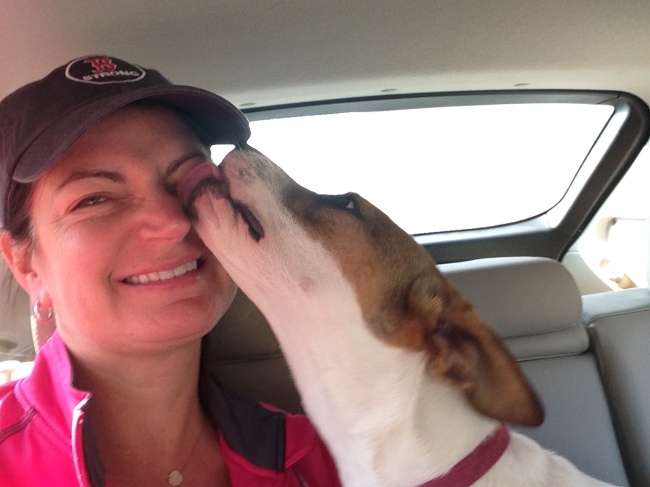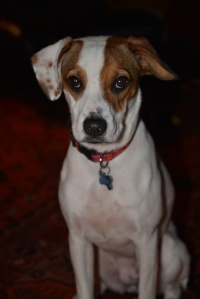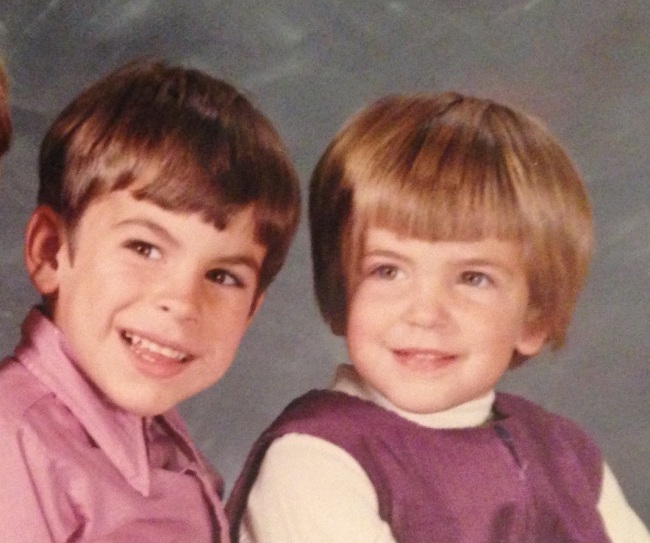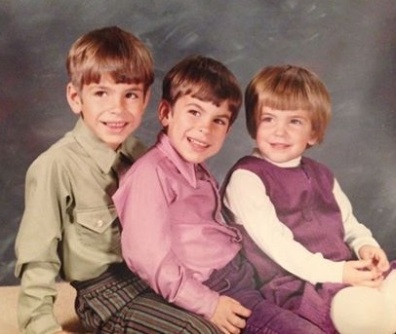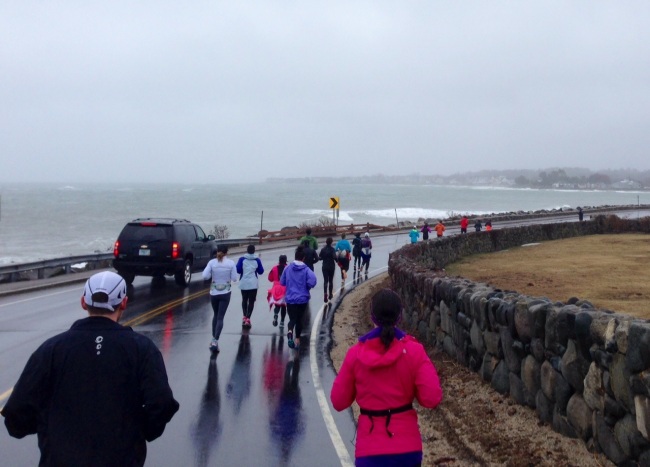Month four of my resolution not to drink alcohol has come to an end. I’m both surprised and proud to report that I have lost 20 pounds and have returned to what I consider to be my “ideal weight.”
 (My weight loss is most obvious in my face. Above, at 155 pounds. Below, at 138 pounds.)
(My weight loss is most obvious in my face. Above, at 155 pounds. Below, at 138 pounds.)
More often than not over the past 12 years, my New Year’s resolution was to lose 20 pounds. In all those times, I didn’t even come close, not even during the years when I tried really, really hard. As I mentioned in my blog last week, we all know that trying is not enough on its own. In this blog post, I try my best to answer the inevitable question of “How did I Do It?”
I attribute my successful weight loss this year to these four things:
- Quitting drinking
- Telling the world about it
- Approaching it like a marathon
- Using an app to track everything
Quitting Drinking
Not drinking is the single-most important factor in my weight loss. As I’ve said before, the first 8 pounds I lost was solely due to not drinking. Everyone knows that alcohol has calories. When I was drinking two glasses of wine a night, I was adding approximately 350 calories to my daily calorie intake. This online article has a wealth of information about wine and calories. It’s hard to stick to a diet of 1,200 calories-a-day if you consume 29% in the form of a liquid with no nutritional value. Studies have also shown that you eat 20% more when you are drinking while you are eating. This recent article talks about that and many more negative effectives of alcohol on weight. In addition to these reasons above, I am now also able to exercise at night, something I never could have done after drinking wine at dinner.
Telling the World
As I mentioned in my inaugural blog post in late December, I improved my chances of sticking to my resolution because I told other people about it and wrote it down. That’s the point of this blog – I’ve made myself accountable not only to my close friends and family, but also to anyone who stumbles across this blog. As of this writing, I have 132 followers and that number increases every week. I don’t think I would have been able to stick to my resolution to quit drinking without the blog. Also, having the blog forces me to think through many issues and ideas associated with drinking, dieting, and exercising. All of this keeps me trying harder and staying more focused. After all, I have to report something interesting back to the blogosphere.
Marathon Approach
I’m aware that it’s a cliché to say that something “is a marathon and not a sprint.” However, since I actually run marathons, I think it’s okay for me to use this phrase. Also, it’s true. I am approaching my weight loss and fitness goals like I approach a marathon, both literally and figuratively. Literally, I am actually training for a marathon, and that means I exercise six days every single week, culminating in both a strenuous race pace run every Saturday and a long run every Sunday. Figuratively, I have chunked out my goals into smaller goals and am taking a long view. I am not following a fad diet or eating different things than I normally would in order to lose weight quickly. With the one exception of cutting out alcohol, I am eating pretty much as I did before. However, when I realize I need to change my diet in order to be more successful at losing weight, I change one thing at a time, so that the change is gradual.
To me, a marathon approach also means that it’s okay to screw up. During a marathon, you’re going to have slow miles and fast miles. The slow miles are not bits of failure, they are just a part of the process. The goal for the marathon runner is the average pace run over the full distance. There can be many points of exhaustion along the way, so even walking is okay. A successful diet is much the same.
Using A Fitness App
Once the easy weight from quitting drinking was gone, it was all about my commitment to use the app. I have a daily goal of 1,200 calories that I track using a free fitness Web application called MyFitnessPal. I lost between 1-1.5 pounds per week without fail by inputting everything I ate into the app. When I exercised, I also input that into that app and earned more calories for that day. If I ate too much, I exercised more. It was that simple; but it was not magic. It takes focus and commitment to leverage this tool in order to lose weight.
The thread that pulls through all of these contributors to my success in losing 20 pounds — quitting drinking, telling the world, having a marathon approach, and using a fitness app – is commitment. In the end, that’s the most important thing.

